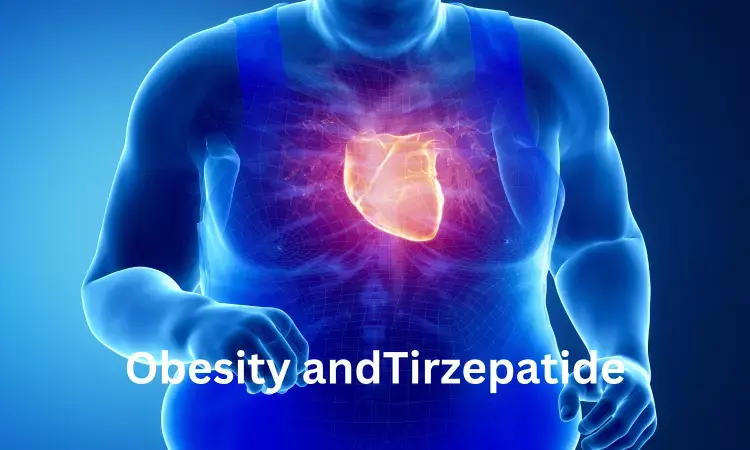- Home
- Medical news & Guidelines
- Anesthesiology
- Cardiology and CTVS
- Critical Care
- Dentistry
- Dermatology
- Diabetes and Endocrinology
- ENT
- Gastroenterology
- Medicine
- Nephrology
- Neurology
- Obstretics-Gynaecology
- Oncology
- Ophthalmology
- Orthopaedics
- Pediatrics-Neonatology
- Psychiatry
- Pulmonology
- Radiology
- Surgery
- Urology
- Laboratory Medicine
- Diet
- Nursing
- Paramedical
- Physiotherapy
- Health news
- Fact Check
- Bone Health Fact Check
- Brain Health Fact Check
- Cancer Related Fact Check
- Child Care Fact Check
- Dental and oral health fact check
- Diabetes and metabolic health fact check
- Diet and Nutrition Fact Check
- Eye and ENT Care Fact Check
- Fitness fact check
- Gut health fact check
- Heart health fact check
- Kidney health fact check
- Medical education fact check
- Men's health fact check
- Respiratory fact check
- Skin and hair care fact check
- Vaccine and Immunization fact check
- Women's health fact check
- AYUSH
- State News
- Andaman and Nicobar Islands
- Andhra Pradesh
- Arunachal Pradesh
- Assam
- Bihar
- Chandigarh
- Chattisgarh
- Dadra and Nagar Haveli
- Daman and Diu
- Delhi
- Goa
- Gujarat
- Haryana
- Himachal Pradesh
- Jammu & Kashmir
- Jharkhand
- Karnataka
- Kerala
- Ladakh
- Lakshadweep
- Madhya Pradesh
- Maharashtra
- Manipur
- Meghalaya
- Mizoram
- Nagaland
- Odisha
- Puducherry
- Punjab
- Rajasthan
- Sikkim
- Tamil Nadu
- Telangana
- Tripura
- Uttar Pradesh
- Uttrakhand
- West Bengal
- Medical Education
- Industry
Tirzepatide's Effectiveness in HFpEF linked to Baseline BMI and Fat Distribution: SUMMIT Trial

A post hoc analysis of the SUMMIT trial, published in JACC, reveals that baseline body mass index (BMI) and fat distribution significantly affect the response to tirzepatide in patients with heart failure with preserved ejection fraction (HFpEF) and obesity. Patients who lost 15% or more of their body weight experienced greater improvements in exercise capacity, blood pressure, and weight. These findings highlight the importance of baseline BMI in predicting clinical outcomes with tirzepatide therapy. The study was conducted by Barry A. and colleagues.
Obesity is a well-documented cause of HFpEF, an entity of heart failure in which cardiac pumping function is maintained but relaxation and filling are impaired. Conventional treatment has been in this subset of patients. Tirzepatide, a weekly injectable medication, engages both the glucose-dependent insulinotropic polypeptide (GIP) and glucagon-like peptide-1 (GLP-1) receptors and is effective in weight reduction and metabolic regulation. The SUMMIT trial tested its impact in 731 obese (BMI ≥30 kg/m²) and HFpEF patients categorized under NYHA class II-IV. The patients were randomized to tirzepatide (n=364) or placebo (n=367) for 52 weeks.
This secondary analysis examined whether baseline severity of obesity (BMI) or distribution of obesity (WHR) had an effect on endpoints like cardiovascular death or HF deterioration, quality of life (KCCQ-CSS), 6-minute walk distance (6MWD), C-reactive protein (CRP), and body weight (BW). Cox regression and mixed-effects models were employed. Investigators also assessed the relationship between the magnitude of weight reduction and waist circumference decrease with tirzepatide and improvements in the major endpoints.
Key Findings:
• Younger, female patients with higher BMI had more volume overload, inflammation, and physical restriction. In BMI tertiles, tirzepatide always decreases cardiovascular death or worsening of HF risk with no heterogeneity by BMI or WHR stratum.
More increase in 6-minute walk distance:
• Estimated treatment difference (ETD): 9.9 m (low BMI) vs 26.3 m (middle BMI) vs 37.5 m (high BMI); P = 0.025
Greater weight loss:
• ETD: −10.7% vs −11.8% vs −14.4%; P = 0.006
Greater decrease in systolic BP:
• ETD: −1.00 vs −6.65 vs −6.62 mm Hg; P = 0.035
Trend towards improved quality of life (KCCQ-CSS):
• P = 0.097
In HFpEF patients with obesity, tirzepatide decreased the risk of heart failure events and cardiovascular death independent of baseline BMI or WHR. Increased BMI and WHR were linked to younger age, female gender, increased inflammatory burden, renal dysfunction, and poorer exercise capacity. These results validate the utilization of tirzepatide as an efficacious therapeutic agent for enhancing HFpEF outcomes in obese patients.
Reference:
Borlaug, B. A., Zile, M. R., Kramer, C. M., Ye, W., Ou, Y., Hurt, K., Murakami, M., Packer, M., & SUMMIT Trial Study Group. (2025). Impact of body mass index, central adiposity, and weight loss on the benefits of tirzepatide in HFpEF: The SUMMIT trial. Journal of the American College of Cardiology, 86(4), 242–255. https://doi.org/10.1016/j.jacc.2025.04.059
Dr Riya Dave has completed dentistry from Gujarat University in 2022. She is a dentist and accomplished medical and scientific writer known for her commitment to bridging the gap between clinical expertise and accessible healthcare information. She has been actively involved in writing blogs related to health and wellness.
Dr Kamal Kant Kohli-MBBS, DTCD- a chest specialist with more than 30 years of practice and a flair for writing clinical articles, Dr Kamal Kant Kohli joined Medical Dialogues as a Chief Editor of Medical News. Besides writing articles, as an editor, he proofreads and verifies all the medical content published on Medical Dialogues including those coming from journals, studies,medical conferences,guidelines etc. Email: drkohli@medicaldialogues.in. Contact no. 011-43720751


